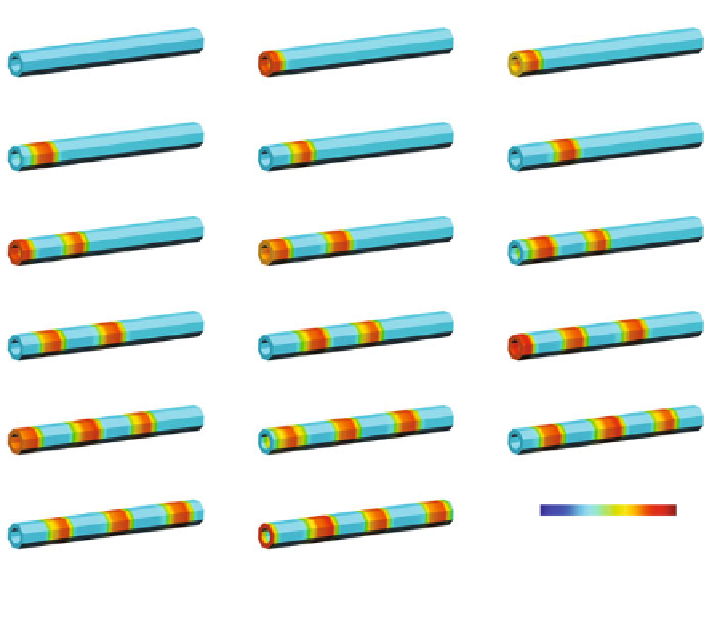Biomedical Engineering Reference
In-Depth Information
0.0 s
0.5 s
1.0 s
1.5 s
2.0 s
2.5 s
3.0 s
3.5 s
4.0 s
4.5 s
5.0 s
5.5 s
6.0 s
6.5 s
7.0 s
7.5 s
8.0 s
-7 0
-30
V
m
(mV)
Fig. 3 Simulated intestinal electrical activity. Visualization of slow wave membrane potential at
regular intervals in an idealized intestinal model, from 0 to 8 s. The color bar indicates
membrane potential values in mV, ranging from
70 (blue)to
30 mV (red)
ot
¼
V
t
þ
1
o
V
m
V
t
m
Dt
m
ð
12
Þ
The discretized bidomain equations can be solved sequentially, with the V
m
term
from Eq. (
11
) is used to update Eq. (
10
) at each time step.
In our simulation, as an example of intestinal slow wave propagation, the
smooth muscle cell model was solved at tissue-level using the bidomain formu-
lation implemented within a grid-based (solution points) finite element framework.
Four grid points were assigned in each n-direction of the segment model in
Fig.
1
b, to make a total of 64 grid points per element, and 8,192 in the whole
geometry. The intestinal slow wave propagation was simulated for 2.8 s and
visualized over the intestinal geometry (Fig.
3
). Boundary conditions of zero
current flux through the cell membrane boundary condition were assigned to the
model. Anisotropic tissue conductivities assigned to the fiber, sheet and sheet-
normal directions were 1, 0.5 and 0.019 mS mm
1
respectively in the intracellular
domain and 1, 0.5 and 0.236 mS mm
1
in the extracellular domain.
The frequency of the simulated intestinal slow wave activity was 23 cpm, with
a propagating velocity of 5 mm s
1
. In this initial simulation, the slow wave

Search WWH ::

Custom Search